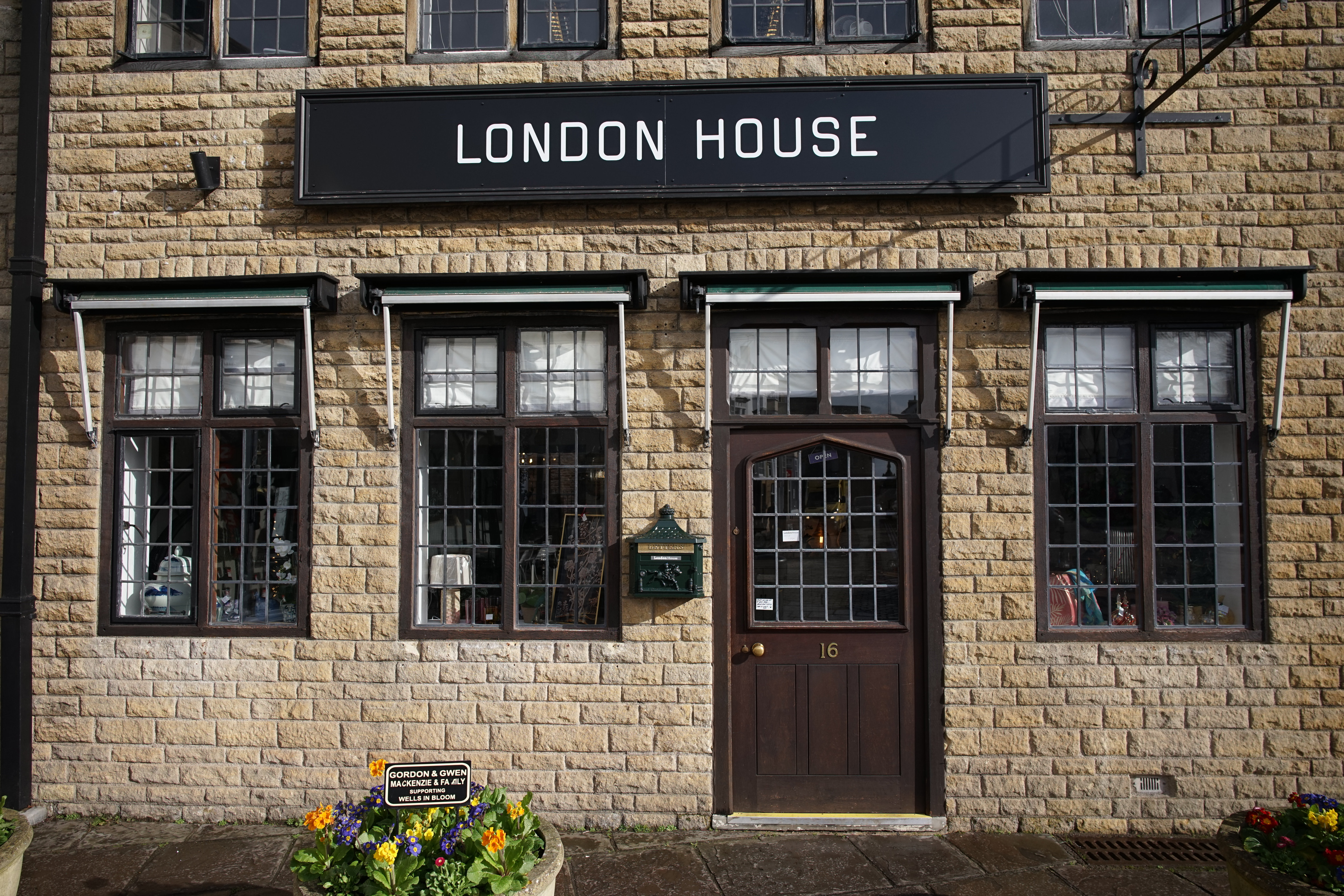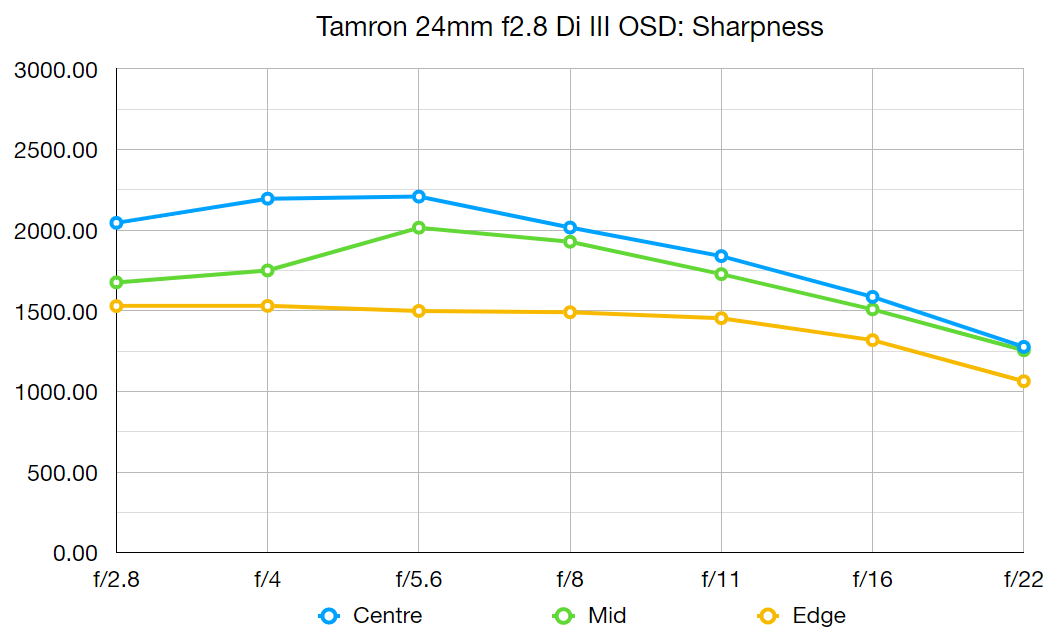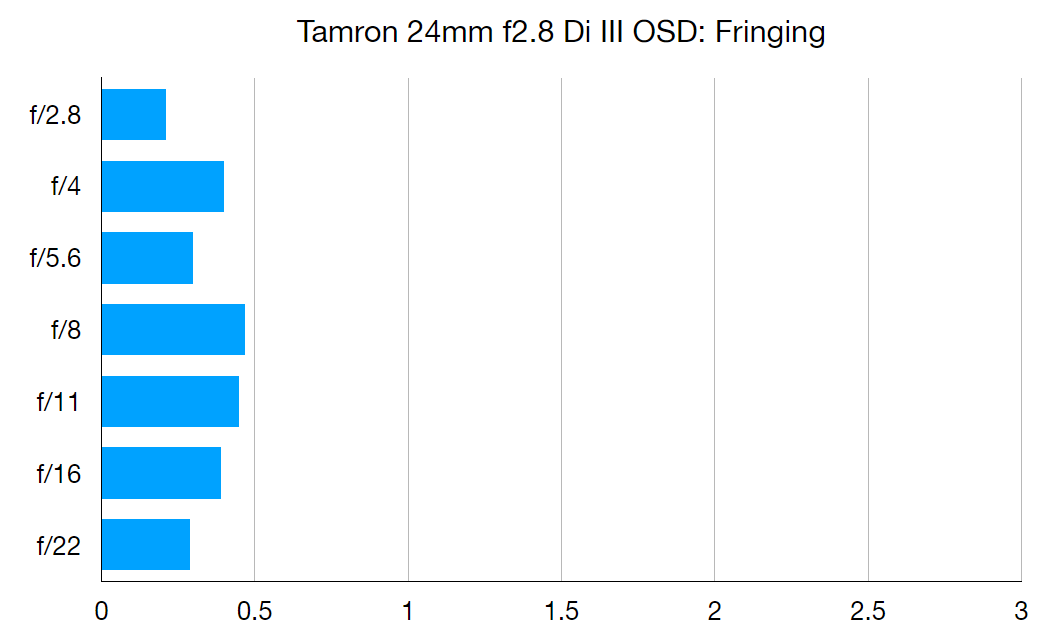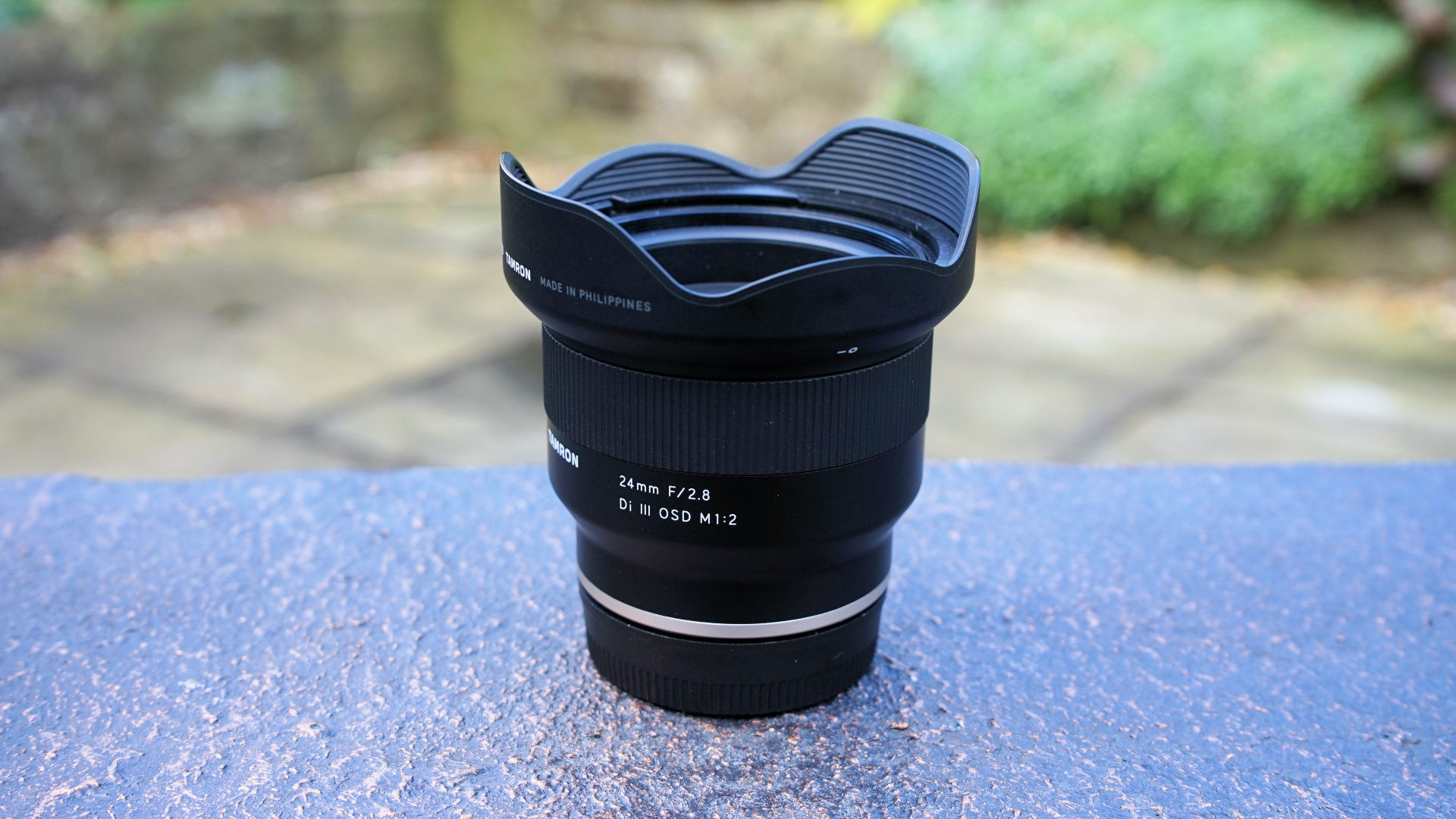Digital Camera World Verdict
Taking residence in the middle of Tamron’s trio of new wide-angle lenses for Sony full-frame E-mount cameras, this one gives a less radical viewing angle than the 20mm, but squeezes more into the frame than the 35mm. It’s great for everything from cramped interiors to rolling landscapes and more besides, especially as the uncommonly short 12cm minimum focus distance enables striking perspective effects and a 0.5x macro magnification factor.
Pros
- +
Compact but strongly built
- +
0.5x macro
- +
Superb sharpness even when shooting wide-open
- +
Good price for an AF lens
Cons
- -
No optical image stabilization
- -
Autofocus speed could be faster
Why you can trust Digital Camera World
There are some cracking 24mm primes available for Sony full-frame E-mount cameras, most notably Sony’s own 24mm G Master lens and Sigma’s 24mm Art lens, both of which boast an f/1.4 aperture rating. However, the Sony is very pricey and the Sigma is pretty bulky. Settle for a more modest f/2.8 aperture rating and you can take advantage of a much smaller, lightweight alternative in the shape of this Tamron 24mm f/2.8 Di III OSD lens.
At just 73x64mm and 215g, it has a virtually identical size and weight to its companion Tamron 20mm f/2.8 Di III and 35mm f/2.8 lenses, as well as having the same 67mm filter thread. And the similarities don’t end there.
• Read more: Tamron 28-75mm f/2.8 Di III RXD review
Specs
Mount: Sony E (full-frame)
Autofocus: Yes
Lens construction: 10 elements in 9 groups
Angle of view: 84 degrees
Diaphragm blades: 7
Minimum aperture: f/22
Minimum focusing distance: 0.12m
Maximum magnification ratio: 0.5x
Filter size: 67mm
Dimensions: 73x64mm
Weight: 215g

Key features
Like Tamron’s other two new wide-angle lenses for Sony cameras, the 24mm has a very short minimum focus distance, this time of 12cm. All three deliver a maximum magnification of 0.5x or 1:2, qualifying them as macro lenses. As well as enabling extreme close-ups that reveal incredibly fine detail, the 20mm and 24mm lenses in particular are great for really exaggerating perspective and making foreground objects go large against a rapidly receding background.
Another similarity is the OSD autofocus system, based on a stepping motor. This enables whisper-quiet autofocus operation, along with smooth transitions during movie capture. At the shorter end of the focus range, the f/2.8 aperture enables a fairly tight depth of field and defocused areas remain fairly smooth when stopping down a little, thanks to the seven-blade diaphragm being quite well-rounded.

Build and handling
Although small and lightweight, the Tamron is sturdily built and feels very robust. Weather-seals include a rubber gasket on the metal mounting plate, and there’s a moisture/grease-resistant fluorine coating on the front element. The lens is supplied complete with a petal-shaped hood.
Under the covers, the Tamron features up-market glass including a glass moulded aspherical element and three LD (Low Dispersion) elements. The line-up aims to reduce both spherical and lateral chromatic aberrations, as well as optimising sharpness. BBAR (Broad-Band Anti-Reflection) coatings are applied to minimise ghosting and flare, and to enhance contrast.
Typical of lenses with stepping motor based autofocus systems, there’s an electronically coupled ‘fly-by-wire’ focus ring but no physical focus distance scale nor depth of field markers. Manual focusing is smooth and precise, and benefits from the option of a focus peaking display in Sony cameras. However, autofocus speed is a little pedestrian.
Performance



Image quality is simply fabulous. Levels of sharpness are highly impressive, even when shooting wide-open at f/2.8, with excellent retention of fine detail even in the extreme corners of the image frame. That’s no mean feat for such a wide-angle lens. Narrow the aperture by a single f/stop and corner-sharpness becomes even better.
Shooting at any setting throughout the aperture range, there’s virtually no colour fringing to be seen, even in the edges and corners of the frame. Resistance to ghosting and flare is also excellent, and contrast remains impressive even when shooting wide-open under very dull lighting conditions.
As we’ve seen in Tamron’s sibling 20mm lens, barrel distortion is very noticeable although a little less heavy in the 24mm. It’s a compromise that we can easily forgive, considering there’s such a wide viewing angle and fast aperture rating packed into such small lenses. And in both cases, automatic corrections are enabled in Sony camera bodies.


Lab tests
We run a range of lab tests under controlled conditions, using the Imatest Master testing suite. Photos of test charts are taken across the range of apertures and zooms (where available), then analyzed for sharpness, distortion and chromatic aberrations.
We use Imatest SFR (spatial frequency response) charts and analysis software to plot lens resolution at the centre of the image frame, corners and mid-point distances, across the range of aperture settings and, with zoom lenses, at four different focal lengths. The tests also measure distortion and color fringing (chromatic aberration).
Sharpness

Even wide-open at f/2.8, sharpness is superb across the whole image frame, which is highly impressive for such a wide-angle lens.
Fringing

Lateral chromatic aberrations are very negligible, even in the extreme edges and corners of the image frame.
Distortion: -5.91
A negative score indicates barrel distortion, a positive score pincushion. A score of zero signifies no distortion.
When uncorrected, barrel distortion can be very noticeable, especially in architectural shooting, but it’s not uncommon for new lenses to rely on auto-corrections.
Verdict

We recently gave a 5-star rating to the Tamron 28-75mm f/2.8 Di III RXD zoom for Sony E-mount cameras. This prime lens is the ideal add-on for when you want that extra slice of wide-angle coverage. It’s sufficiently small and lightweight to find a home in a spare corner of your camera bag, and amazingly versatile for a wide-angle prime, with its ultra-close-focusing and 0.5x macro abilities. All in all, it’s a star performer with a highly competitive price tag.
Read more:
Matthew Richards is a photographer and journalist who has spent years using and reviewing all manner of photo gear. He is Digital Camera World's principal lens reviewer – and has tested more primes and zooms than most people have had hot dinners!
His expertise with equipment doesn’t end there, though. He is also an encyclopedia when it comes to all manner of cameras, camera holsters and bags, flashguns, tripods and heads, printers, papers and inks, and just about anything imaging-related.
In an earlier life he was a broadcast engineer at the BBC, as well as a former editor of PC Guide.



